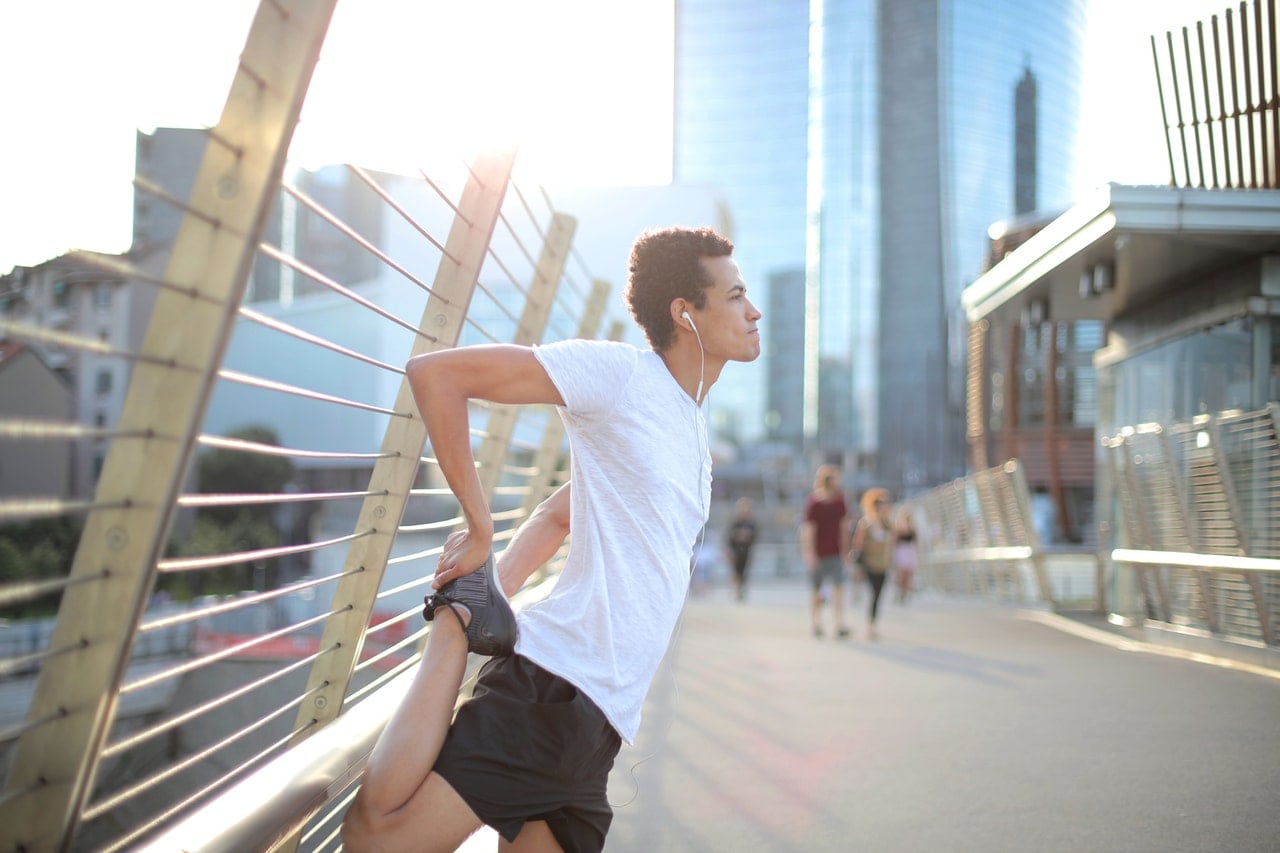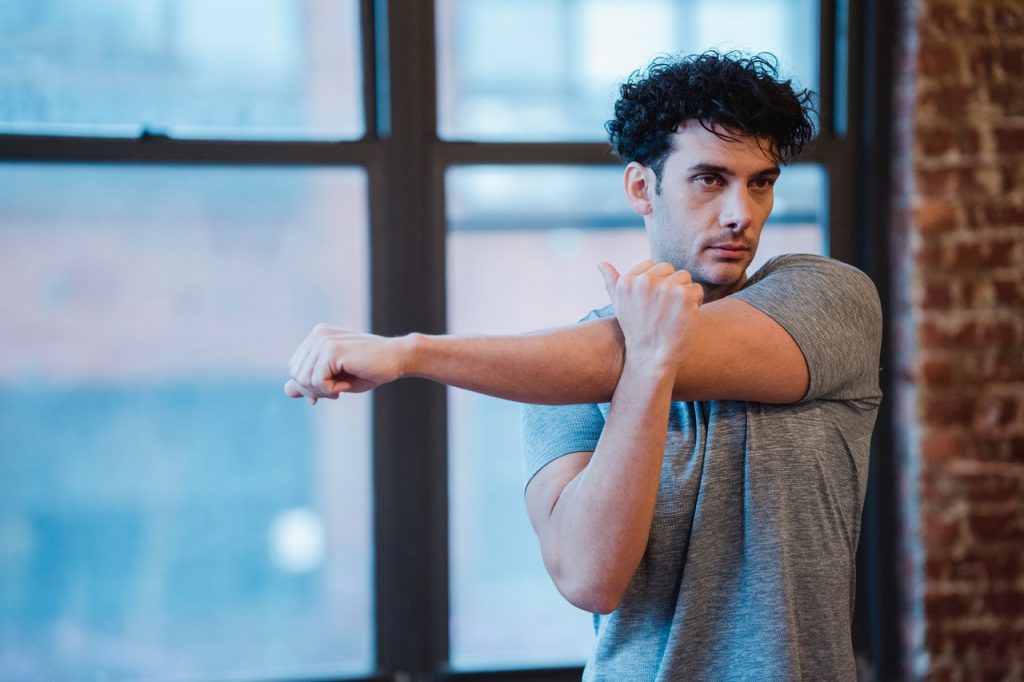
The warm-up is an integral part of every workout. It ensures that your body is prepared for physical exertion and that your muscles are properly stretched. A good warm-up guarantees that you won’t pull a muscle during your workout – as long as your workout is well thought out. Be sure to check out how to perform the perfect warm-up.
Your warm-up should combine some aerobic exercise and stretching. This will increase your starting heart rate, but also prepare your muscles for sudden contraction and relaxation.
During dynamic stretching, your muscles not only get stretched a lot, but they also toughen up for the effort ahead of them. It should involve many parts of our body and cannot be omitted during the warm-up.
Dynamic bends will stretch the muscles of your legs and back at the same time. Perform dynamic bends, taking care not to strain your lumbar region. First, bend forward so that your head hangs between your legs and your hands try to touch the ground. Then, smoothly move to your left leg, and then to your right leg. During the incline, try to dynamically deepen it. Perform the stretch in a reasonable manner – your back should be slightly rounded. You should not feel any pain during the stretch, only the feeling of stretching along the entire length of your spine.
Interlace your hands and straighten your arms at the elbows. Then, lift your hands to the height of your chest and try to stretch them as much as possible. During this stretch, you will feel a pulling of the muscles from your shoulders to your forearms. Rhythmically try to pull your hands and return to less tense muscles.
Another way to stretch your arms is to draw your straight arm to your chest. Position it so that it is diagonally across your torso. Then hold it against your chest with your other hand and dynamically pull it tighter to your chest. Stretch the muscles of your other hand in the same way.

You should also do aerobic exercises during the warm-up. One of them is jumping once on one leg and then on the other. Jump up while bringing the leg bent at the knee to your chest. Land on one leg and dynamically change it to the other, lifting the first leg to the chest.
A very good part of the warm-up are also jumping jacks. When doing jumping jacks, remember that the jumps should not be high – what matters is the dynamics of the movement and spreading the arms and legs wide, so that all the muscles of the limbs are worked.
Don’t forget to warm up your hips – using them, perform so called figure eights, as well as transfer your body weight from one leg to another, at the same time pushing your hip out to the side. This element of the warm-up will allow you to prepare your body for sit-ups or squats.
To warm up the muscles of the legs, it is very helpful to quickly jog, as well as rises on tiptoe. While performing them, it is good to hold the silhouette up a little bit so that the calf muscles work harder and get used to working harder during the workout. Many people also use extra weight in the form of dumbbells to make the warm-up more effective.
When warming up, it is also a good idea to use available machines such as a stationary bike or a treadmill. However, an orbiter will have the most comprehensive effect, making you work both your leg and arm muscles. You can put extra weight on it, so you’ll already burn calories while doing your warm-up.
Some people also use a spinning wheel to massage their muscles before a workout, but it’s a much better idea to get them moving. Leave the massage for after your workout.
Main photo: Andrea Piacquadio/Pexels